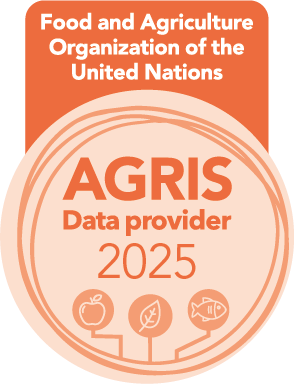Challenges and Constraints in Adopting Modern Horticulture Practices in Apple Orchards
DOI:
https://doi.org/10.26725/JEE.2023.3.35.7060-7069Keywords:
Adoption; Horticulture; Technology; Challenges; Small-holder; Apple; Himachal PradeshAbstract
In many developing countries the adoption rate of new agricultural technology especially by small-scale farmers is low. The factors influencing farmers’ adoption of new technologies vary from specific circumstances to local conditions. The most essential aspect in the adoption of new tools and techniques is the farmer’s perception of these technologies which often remains unidentified. Using a mixed method approach, this study explored marginal and small-scale apple orchardists of rural Shimla in Himachal Pradesh, India for their perceptions, challenges, and limitations of adaptive capacity to modern horticulture practices. Via in-depth interviews, the growers shared multifaceted challenges and fears impeding their adoption decision, the most noticeable ones were - the high cost of horticulture inputs, unpredictable weather conditions, small orchard size, inadequate labour, insufficient knowledge on modern horticulture practices and lack of information from the government departments. Based on these interviews, a thematic analysis and a survey were conducted - broadly representing the common horticulture problems and factors restricting these orchardists from adopting new technologies.References
Bonabana-Wabbi, J. (2002). Assessing factors affecting adoption of agricultural technologies: The case of Integrated Pest Management (IPM) in Kumi District, Eastern Uganda .Unpublished Doctoral dissertation, Virginia Tech.
Diiro, G. M. (2013). Impact of off-farm income on agricultural technology adoption intensity and productivity. Agricultural Economics, 11, 1-15.
Ellis, F., & Freeman, H. A. (2004). Rural livelihoods and poverty reduction strategies in four African countries. Journal of development studies, 40(4), 1-30.
Feder, G., Just, R. E., & Zilberman, D. (1985). Adoption of agricultural innovations in developing countries: A survey. Economic development and cultural change, 33(2), 255-
Foster, A. D., & Rosenzweig, M. R. (2010). Microeconomics of technology adoption. Annual Review of Economics., 2(1), 395-424.
Joshi, P. K., Joshi, L., & Birthal, P. S. (2006). Diversification and its impact on smallholders: Evidence from a study on vegetable production. Agricultural Economics Research Review, 19(2), 219-236.
Knowler, D., & Bradshaw, B. (2007). Farmers’ adoption of conservation agriculture: A review and synthesis of recent research. Food policy, 32(1), 25-48.
Mir, J. I., Sharma, O. C., Raja, W. H., Sami-Ullah, S., & Raja, R. H. S. (2022). High-density plantation in apple “A highly remunerative enterprise. Indian Horticulture, 66(5).
Minot, N., & Roy, D. (2007). Impact of high- value agriculture and modern marketing channels on poverty: An analytical framework. International Food Policy Research Institute, Washington, DC.
Mwangi, M., & Kariuki, S. (2015). Factors determining adoption of new agricultural technology by smallholder farmers in developing countries. Journal of Economics and sustainable development, 6(5).
Rao, E. J., & Qaim, M. (2011). Supermarkets, farm household income, and poverty: Insights from Kenya. World development, 39(5), 784-796.
Sahara, S., Minot, N., Stringer, R., & Umberger, W.J. (2015). Determinants and effects of small chilli farmers’ participation in supermarket channels in Indonesia. Bulletin of Indonesian economic studies, 51(3), 445-460.
Suprehatin, S. (2019). Characteristics of Farmer Adopters of High Value Horticultural Crops in Indonesia. Jurnal Manajemen & Agribisnis, 16(2), 181-181.
World Bank (2008). Millennium Development Goals. Retrieved 22 Nov, 2012 from www.worldBank.org/mdgs/poverty-hunger.html
Downloads
Published
How to Cite
Issue
Section
License
Copyright (c) 2023 https://creativecommons.org/licenses/by-nc-sa/4.0/

This work is licensed under a Creative Commons Attribution-NonCommercial-ShareAlike 4.0 International License.
Authors who publish with JEE agree to the following terms:
- Authors retain copyright and grant JEE right of first publication with the work simultaneously licensed under a Creative Commons Attribution License that allows others to share the work with an acknowledgement of the work's authorship and initial publication in this journal.
- Authors are able to enter into separate, additional contractual arrangements for the non-exclusive distribution of the journal's published version of the work (e.g., post it to an institutional repository or publish it in a book), with an acknowledgement of its initial publication in this journal.
- Authors are permitted and encouraged to post their work online (e.g., in institutional repositories or on their website) prior to and during the submission process, as it can lead to productive exchanges, as well as earlier and greater citation of published work (See The Effect of Open Access).
Extension Education Society
https://creativecommons.org/licenses/by-nc-sa/4.0/
This work is licensed under a Creative Commons Attribution-NonCommercial-ShareAlike 4.0 International License.













.png)

